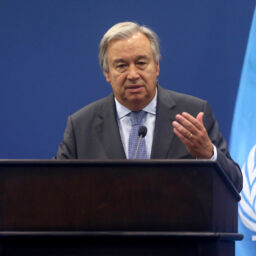Micronesia Grapples with Severe Drought: Food and Water Scarcity Threaten Island Communities

Photo: Reuters
In the serene expanse of the Western Pacific, a crisis is unfolding that belies the tranquil image of Micronesia’s idyllic islands. A prolonged and severe drought has taken a firm grip on the region, with parts of the Marshall Islands, Guam, Palau, Mariana Islands, and the Federated States of Micronesia (FSM) now languishing under conditions classified as extreme and exceptional drought. The impact of this environmental adversity is far-reaching, with critical implications for agriculture, water resources, and the everyday lives of the residents. The normally lush and vibrant landscapes of FSM’s Yap Proper, the northern Marshall Islands’ atoll of Wotje, and other adjacent islands are now facing the grim reality of desiccated soil and dwindling water reserves. The situation is dire, with local communities that are heavily reliant on subsistence farming and fishing experiencing acute food shortages and water scarcity. Joshua Schank, a weather forecaster with the Guam Weather Service, spoke to RNZ Pacific about the severity of the situation. It was anticipated that the last four months would bring drier conditions, but the current El Niño weather pattern has exacerbated the drought, bringing unexpected hardship to the region. El Niño, a complex climate pattern resulting from variations in ocean temperatures in the Equatorial Pacific, often leads to significant weather disruptions, including drought and heavy rainfall in different parts of the world.

















